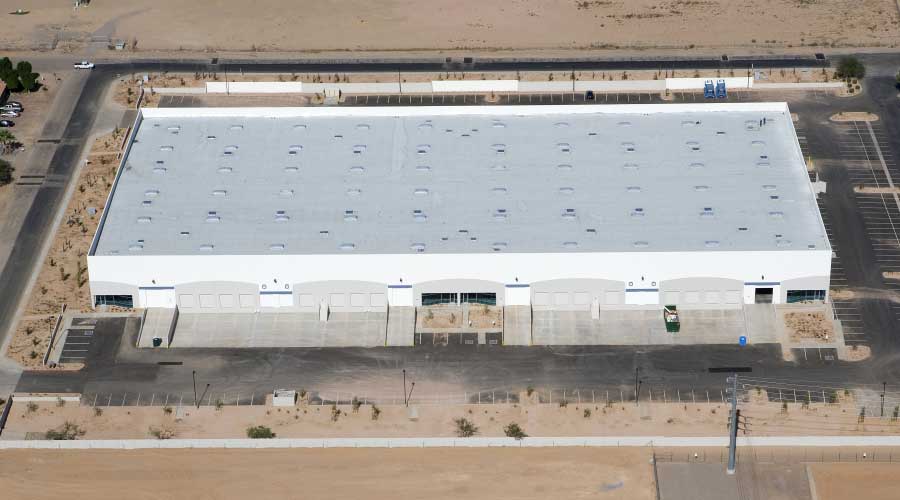Snow, Ice, Cold Can Damage Roof Shingles, Membranes
Steep-slope roof systems also require attention prior to the snow, ice, and cold of winter months. As with the low-slope membrane systems, one of the primary elements is cleaning out gutters. Snow and ice build-up at the eaves can make its way under the first row of shingles if the water is not drained off in a timely manner. Building codes in temperate climates require a base sheet over the entire roof deck surface and eaves flashing applied a minimum of 36 inches up slope from the eaves. Even with these materials, water back-up from clogged gutters may find its way into the interior spaces. All debris on roof surface — e.g., leaves, loose granules — should be removed before they enter the gutters.
Another safeguard is to trim all trees in the vicinity of the roof surface. The weight from snow and ice or high winds can break tree limbs that could crash down onto the roof. And leaves from trees in the vicinity of the roof can clog the gutters. Leaves that remain on the roof surface for a long period of time can also contribute to mold and fungi growth on some types of shingles.
The shingle surface should be inspected for loose shingles, openings, and nail pops — a common defect and point of moisture intrusion. All penetrations and chimney areas should be inspected for openings or loose flashing materials. A common defect is also at openings or deterioration of construction joint sealants.
Finally, the ceilings of the interior areas should be inspected for stains that indicate active roof leaks. Heat from the interior may contribute to mold growth if the condition is not corrected.
No matter what type of roof material or roof system is on the facility, the winter months can be damaging. Thorough inspections, identification of defects and — most importantly — corrective actions to repair the defects can ensure that the roof system provides the required protection. Following these practices can provide a warm and dry interior environment no matter how harsh the winter is.
John A. D'Annunzio, president of Paragon Consultants and Paragon Roofing Technology, Inc., has more than 20 years experience as a consultant on projects around the world. D'Annunzio, a construction consultant specializing in roofing and waterproofing materials application and field performance, has written four books about roofing. He can be reached at john_paragon@ameritech.net.
Common Roof Failures
Although all roof membranes have different physical properties and failure modes, certain deficiencies are common to all roof membranes. The failure conditions are elevated in winter months through cold temperatures, the constant freeze/thaw cycle, and precipitation. Here are some common membrane failure modes to look out for:
Brittleness: All roof membranes become brittle at the end of their service lives. This phenomenon is more rapid in some membranes. Once the material becomes brittle, it loses the elasticity required to provide weatherproofing. The material can be tested (tensile/elongation tests) to determine remaining service life, or failure can be seen in the form of grazing/cracks and splits in the membrane surface. Visual observation of material scrim or reinforcement can also detect material failure.
Brittleness often accelerates in roof membranes in winter months from the constant freeze/thaw cycle.
Wet Insulation: All roof insulations lose structural and thermal integrity once they are wet. All wet insulation should be removed from the system to avoid costly structural deck damage (particularly on metal decks). Typically, if more than 25 percent of a roof system has wet insulation, a full roof replacement is recommended. Wet insulation can be determined by any method of moisture testing. If non-destructive moisture testing is conducted, gravimetric testing should be conducted to verify that the material is wet. Some adhered membranes will illustrate wet insulation through excessive blistering and membrane ridging.
In winter months wet insulation in combination with the constant freeze/thaw cycle contributes to loss of adhesion.
Flashings/Penetrations: Flashings and penetrations are the most vulnerable point of a roof system and nearly two-thirds of all roof leaks occur at these points. Openings, splits, and sagging of flashing materials are common causes of roof leaks. Excessive openings or displacement of these materials can lead to free flow of moisture infiltration into the system and the building.
|
Related Topics:













